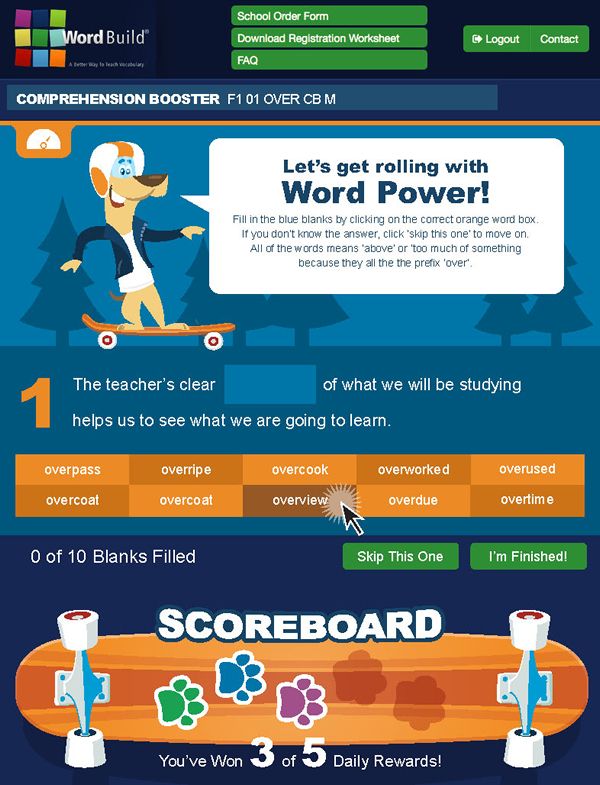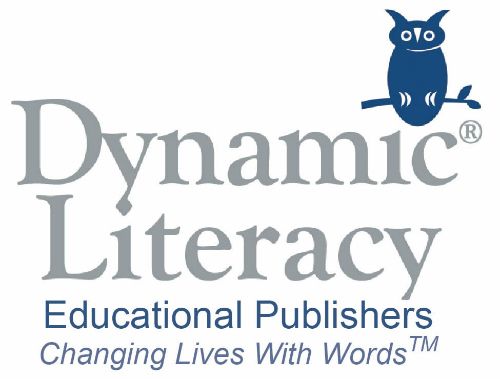Vocabulary learning is such an important part of schooling. It helps in reading, understanding, deciphering, logic, common sense, and improves overall communication. I have always placed a strong emphasis on learning roots, prefixes, and suffixes throughout all our years of homeschooling, integrating these concepts into all age and ability levels. As they grow older, they have begun to appreciate the value of knowing these facts, as it helps them through the heavy reading material of high school and college.
One downside of learning roots, prefixes, and suffixes is the inability to sometimes see how it all fits together into words. Mostly, my girls found themselves memorizing lists of words so similar that they were easily confused. That's where a program like WordBuildOnline from Dynamic Literacy came to our rescue!
 In our home, we have had the privilege to review this web based program for the past six weeks. There are four different levels available. For the purpose of this review, I would like to discuss two of them: Foundations Level 1 and Elements Level 1.
In our home, we have had the privilege to review this web based program for the past six weeks. There are four different levels available. For the purpose of this review, I would like to discuss two of them: Foundations Level 1 and Elements Level 1.About Dynamic Literacy: This is a program designed specifically for homeschoolers, to increase their vocabulary through exponential learning. I was fascinated by the profound way that exponential learning was explained on the company's website. It just makes so much sense that if a student learns their roots, prefixes, and suffixes as 'building blocks' that they then will be able to go on and decode many bigger words that are made up of these smaller parts.
Short and Sweet: The WordBuildOnline program is based on the premise that a small amount of daily review is the most effective way to retain this material. The activities are timed, but not for the purpose of stressing the student to 'beat the clock before time runs out' but rather to give the student a gauge and ending point for their studies. The timer (and activities for the current unit) is set to turn off after the student has engaged in 15 minutes worth of study. If they have not finished, it will be saved for them to start right back up the next day where they left off. This was probably the BEST reason that my girls gave for enjoying this program. They knew they could work hard for a short time, and then be done! What they may not have realized is how much learning power was packed into the 10-15 minutes per day that they used this program. If the student is able to finish in less time than 15 minutes, then they can either continue with more activities or be done for the day.
Parent friendly: The sign-in and log-on process is quite simple for this program. The parent sets up their student accounts at the parent dashboard, and each student is given a unique user name and log in. The program automatically adjusts as the students work - if they are flying through the material it will make it more difficult, but if they are struggling it will slow the pace. At the end of each activity, the parent receives an email stating what the student completed and how much time was spent. It is very easy for the parent to see exactly where the student is at in their progress. The parent dashboard also contains a complete progress report for each and every time the program was used.
The program offers a rating scale that allows the parent to understand how much the student is comprehending, and how well they are mastering the material. If a student struggles and does not reach mastery, the program will repeat the activity and unit until they do.
From the Start: The student signs in to see an animated dog that guides them through the process of starting the program. There are several helpful videos on the website, that demonstrate how to use the program and why learning roots, prefixes, and suffixes is so important.
How we used the program: Kelly is working through Foundations Level 1, which includes 25 units of foundational roots, prefixes, and suffixes. Each unit contains 5 activities. These activities can be used one a day, taking an entire school week for each unit, or they can be moved through more quickly as the student is able. The program will not advance the student if they are not ready to move on. Since "Foundations" is most appropriate for grades 2-4, Kelly was able to move through it extremely quickly. She is over halfway through the program, working on it about 3 days per week. Many of the roots are simple ones that she has already learned. Even though she was already familiar with much of the material, she really enjoyed using this program and seeing how words were "built" and fit together. She was also fascinated over how many words could be made from just a few small roots, prefixes, and suffixes. I noticed her starting to decipher more difficult words as she was reading books, simply from understanding the process of how words are built. Kelly just completed fourth grade and was able to complete most of the activities in under two minutes. This meant that her fifteen minute time limit was spent on an entire unit rather than on just one activity, which seemed to suit her well. Despite flying through the program, she retained most of the information.
 |
| An example of an activity page |
Melissa has been using Elements Level 1, which is designed for students who have completed both levels of "Foundations" or are in sixth grade or older. Melissa just completed eighth grade, and had no trouble at all with this program. If a student is older and has not completed "Foundations" there is no need for worry because a thorough review is built into the beginning of "Elements", with activities that the student must complete before starting the new concepts. Melissa actually found the review to be rather boring, but she has had a good amount of training in roots, prefixes, and suffixes, so that was to be expected. There is no way to bypass the review as far as I could tell. Elements works on the same concept - completing five activities per unit in under 15 minutes per day. It also self-adjusts according to the student's performance level.
Scoring: The girls liked the concept of the Scoreboard on the bottom, but found that sometimes it didn't match up with what they actually completed, which left them slightly frustrated. After completing all five activities quickly, they wanted to see all five rewards marked on the scoreboard, and often they were not. Not sure if it was a glitch in the program or something we were doing wrong.
My overall comments: I think this program is a handy and fun way to build vocabulary lessons into a student's daily routine. I love the concept of a time limit, eliminating the potential drudgery of rote learning. The other concept I appreciate about this program is that it clearly shows how the new words are used in a sentence. The activities approach the same set of words five different ways, so the student is seeing the words repeatedly in various situations. This approach helps cement the words down in their brains, and allows them to know HOW to use the word, not just what it might mean.
I have enjoyed using this program, and recommend it as a quick and easy way for a parent to add more vocabulary learning to their child's Language Arts studies!
Connect with Dynamic Literacy on social media:
Discount Alert! This program is currently available for $30 per student, which includes a free parent/teacher account to manage the student's progress. The company is offering a generous discount for readers of my blog. Use the code aclassofone for 10% off the online program, or 25% off the books.
Other members of The Old Schoolhouse Review Crew reviewed not only WordBuildOnline, but also the textbook versions of these same programs. Check out their reviews and these other related products by clicking the banner below:

Copyright 2012-2015 - "Be The One" - www.aclassofone.blogspot.com All rights are reserved. No text, photos, or content may be reproduced without direct permission from the author.







No comments:
Post a Comment
Thanks for sharing your thoughts!